Brown Rot of Peach
Return to Diseases
Brown rot (Monilinia fructicola) can result in fruit rot, blossom blight, and twig blight in peach and other stone fruit. Blossom blight phase occurs as the fungus infects open blooms; flower parts turn brown and blossoms die. Infection moves downward from blooms into spurs and twigs; cankers develop. Fruit infections begin as small, round, dark spots, which enlarge rapidly. In as little as 2 days, masses of light-colored tan-to-gray spores rapidly consume large portions of fruit. Fruit eventually become hard and shriveled (mummify) and remain attached to trees or drop. Damaged fruit and ripening fruit are most susceptible to infection; fallen fruit are also susceptible. Twig lesions may cause blighting, resulting in death of twigs; gummosis is common in affected twigs. Infection is more severe during rainy spring weather. The fungus overwinters in mummies and twig cankers.
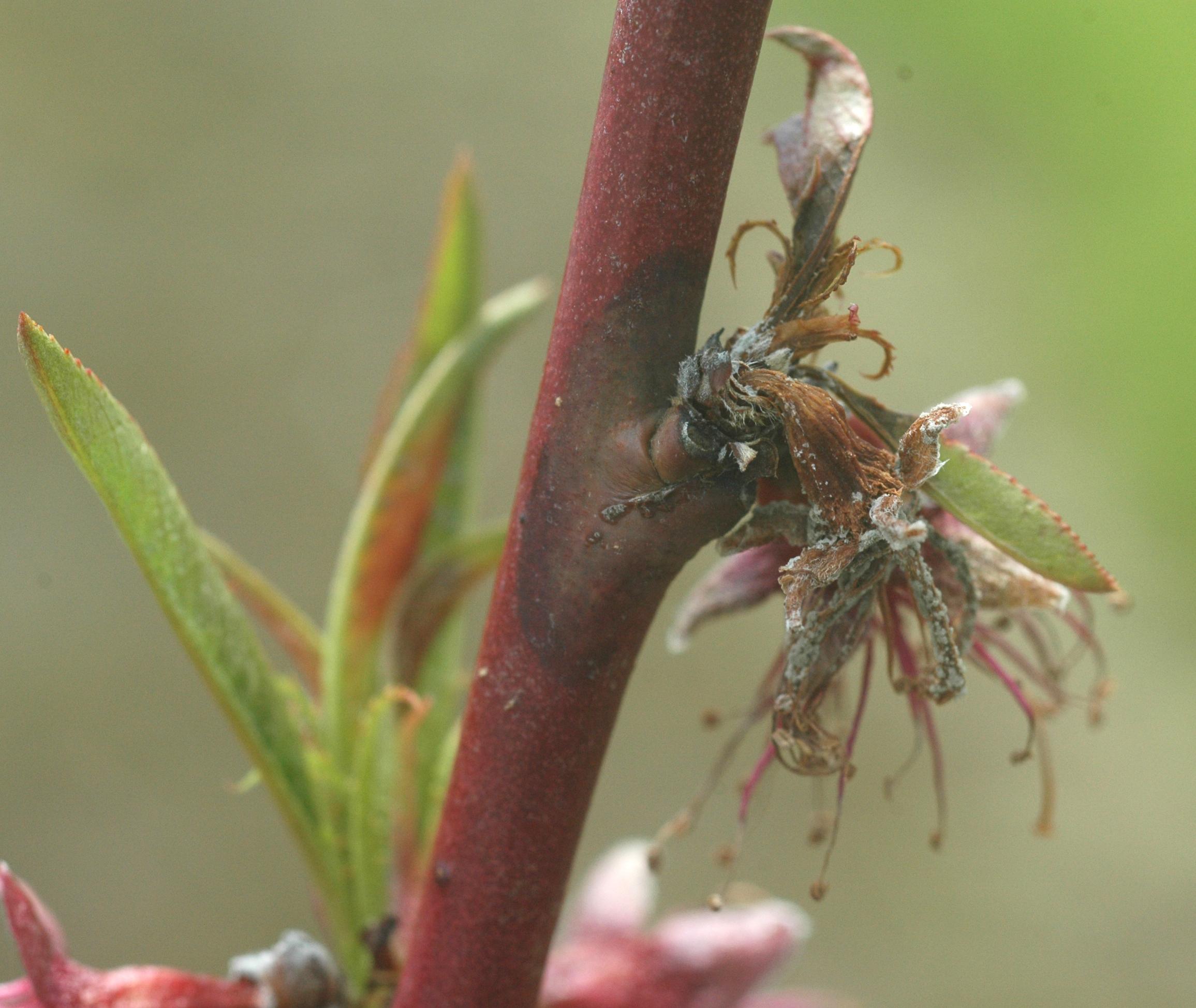
Brown rot blossom blight.
(Photo: Jay W. Pscheidt, Oregon State University)

Brown rot twig blight resulting from blossom infection.
(Photo: Anon, University of Georgia)
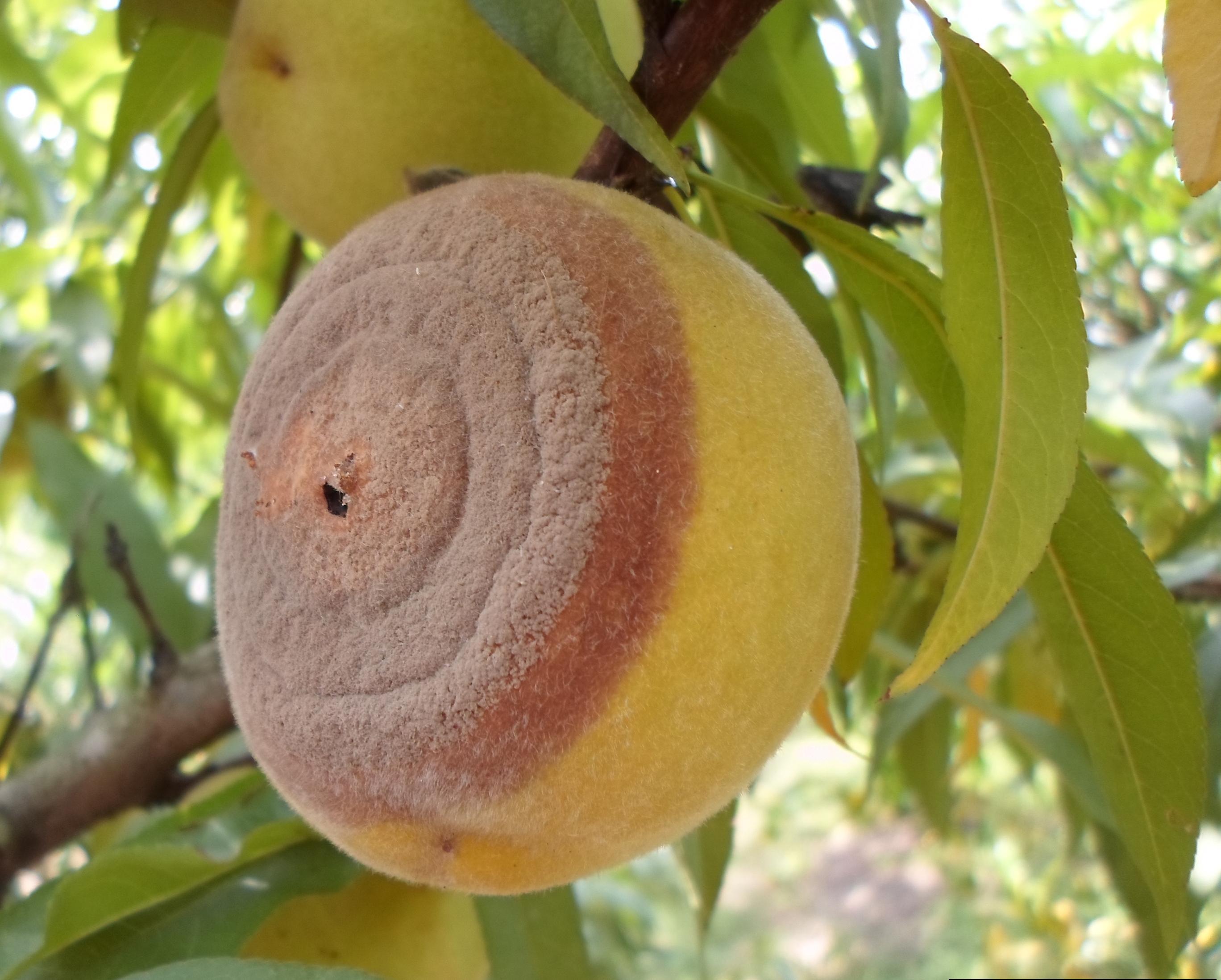
Brown rot blossom blight fruit infection.
(Photo: Jonas Janner Hamann, Universidade Federal de Santa Maria (UFSM), Bugwood.org)
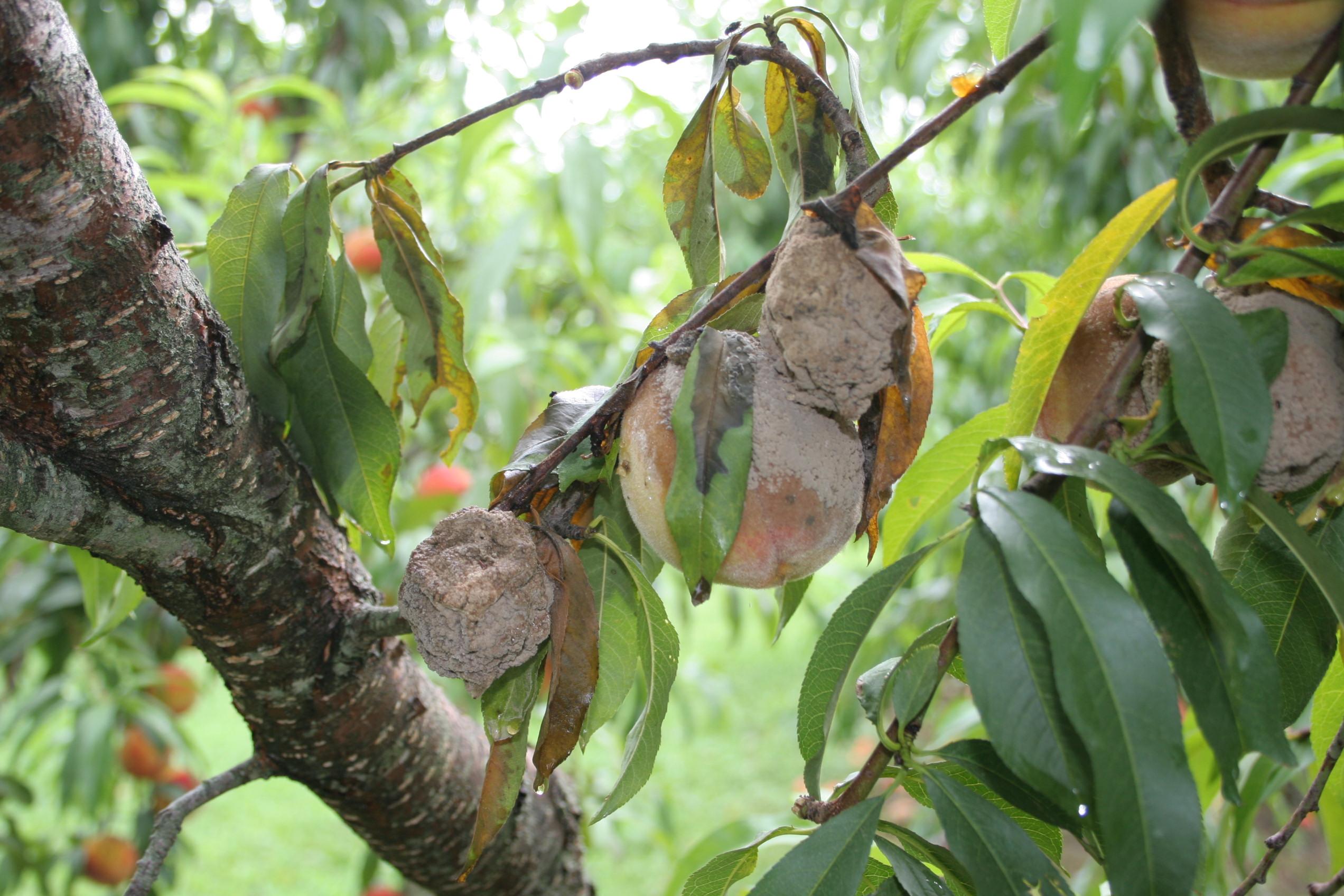
Brown rot blossom blight fruit infections expand rapidly to encompass entire fruit.
(Photo: John Strang, University of Kentucky)
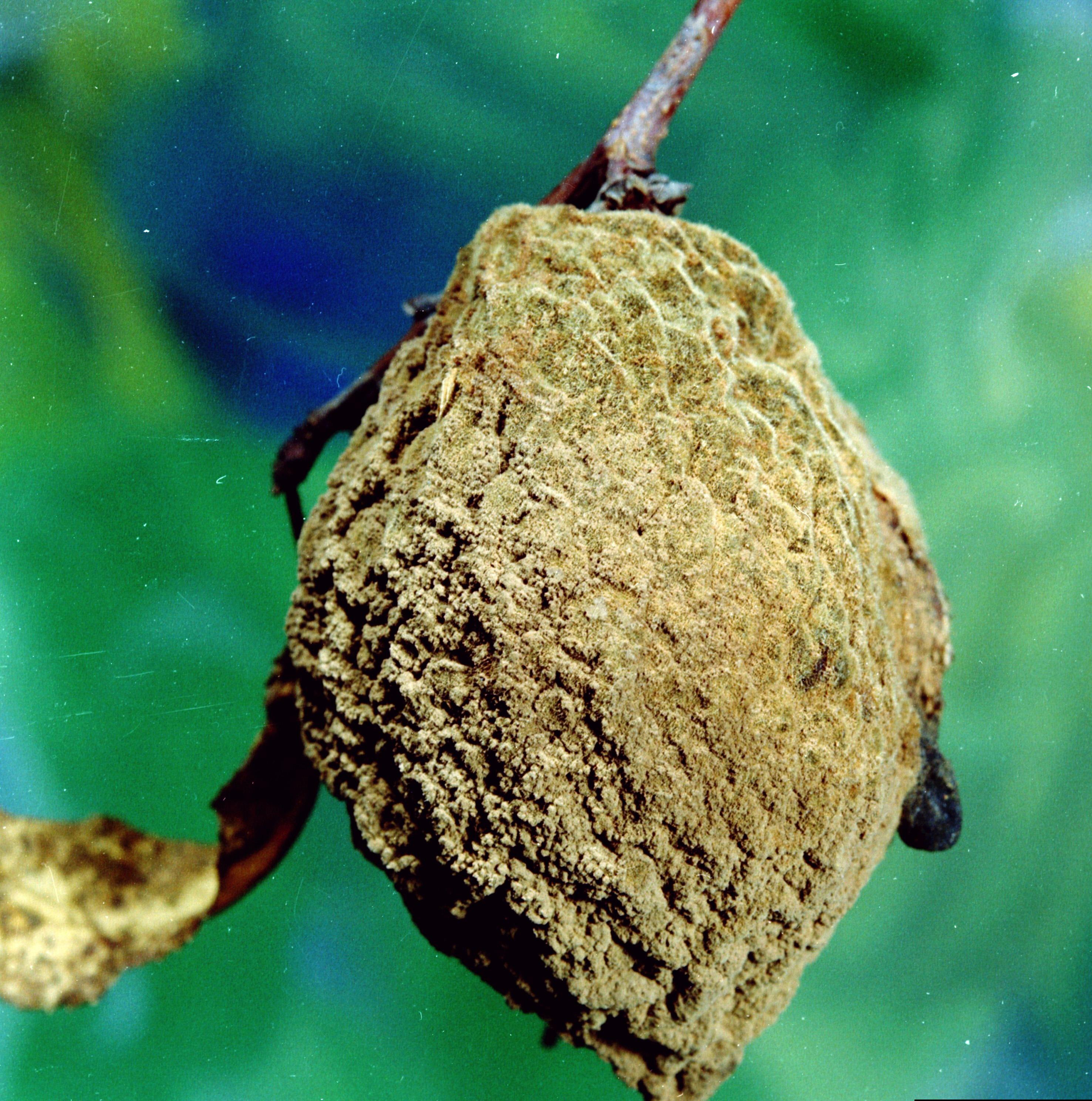
Infected fruit become covered with fungal sporulation.
(Photo: USDA-CES Slide Series, Clemson University, Bugwood.org)
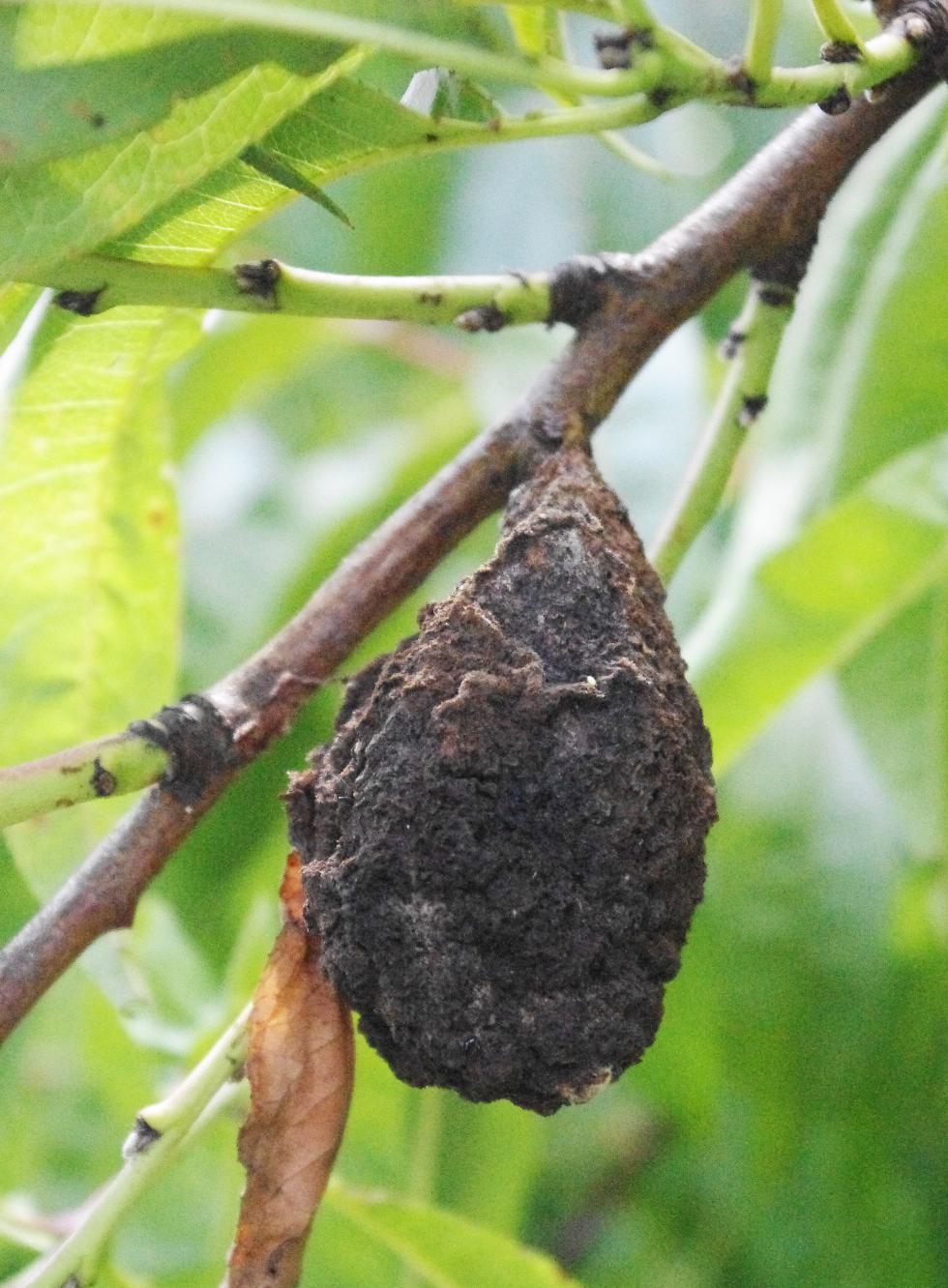
Diseased fruit eventually mummify.
(Photo: John Strang, University of Kentucky)
Management:
- Practice proper sanitation (remove infected fruit, mummies, and fallen fruit; discard debris away from orchard).
- Avoid fruit injury and wounding (insects, birds, mechanical).
- Use fungicides beginning at bloom; fungicides do not cure disease.
- Refrigerate fruit immediately after harvest.
